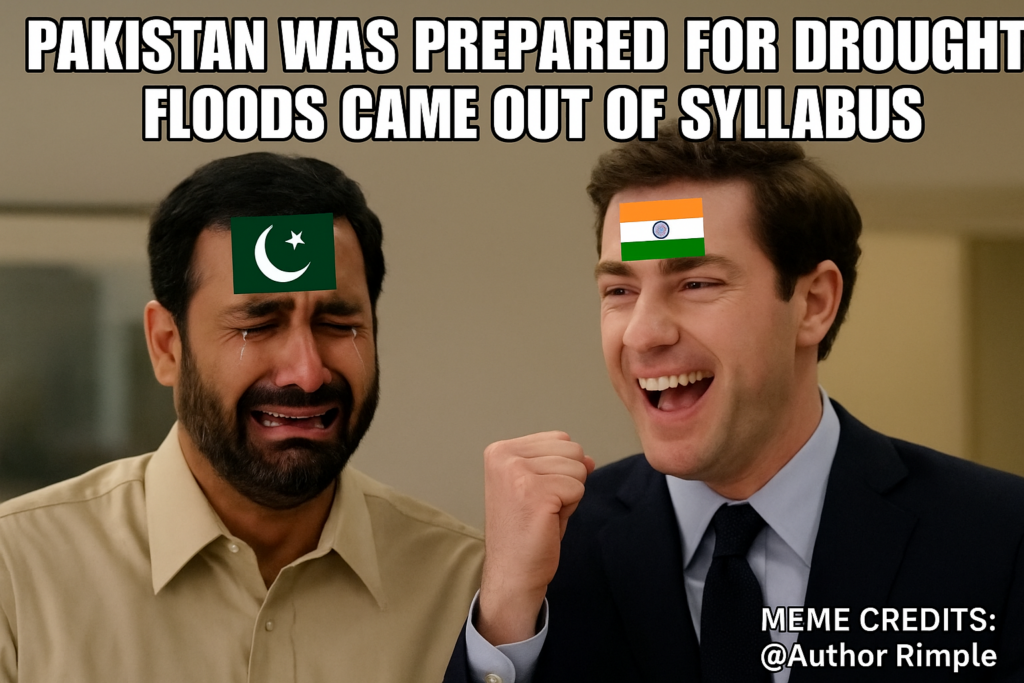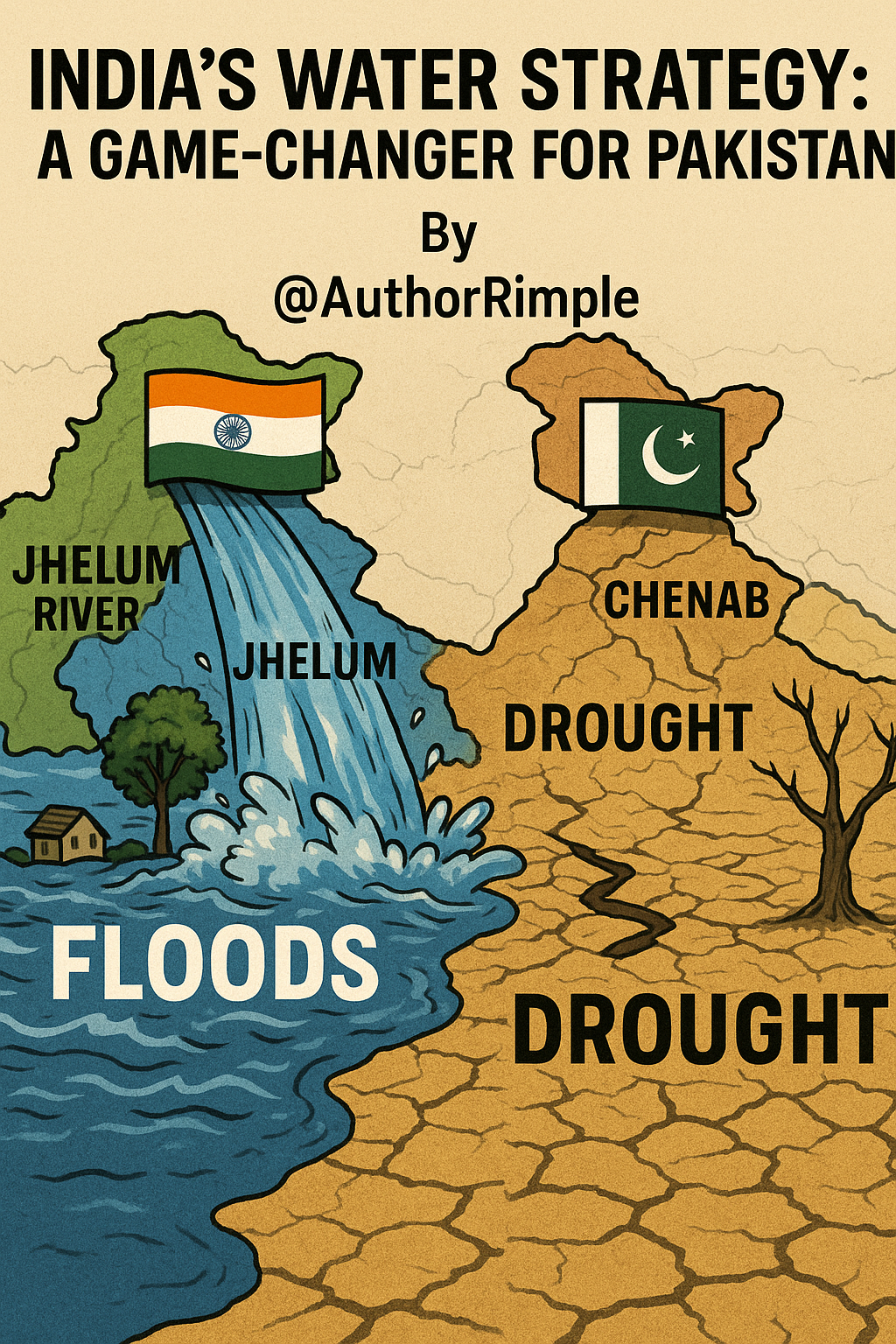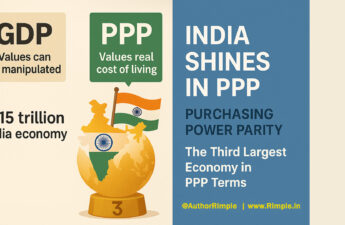India recently made a bold move by suspending the Indus Waters Treaty (IWT), a 1960 agreement that controls how India and Pakistan share water from six rivers: Indus, Jhelum, Chenab, Ravi, Beas, and Sutlej. After suspending the treaty, India took two surprising actions: it released a huge amount of water into the Jhelum River, causing floods in Pakistan, and at the same time, it almost completely stopped the water flow in the Chenab River, creating a drought-like situation. Let’s break this down in simple English to understand what happened, how it affects Pakistan, and the clever strategy India used.
What Did India Do?
India suspended the Indus Waters Treaty after a terror attack in Pahalgam, Jammu and Kashmir, which it blamed on Pakistan. The treaty gave Pakistan control over the western rivers (Indus, Jhelum, Chenab) and India control over the eastern rivers (Ravi, Beas, Sutlej). By suspending the treaty, India signaled that it would no longer follow the rules of sharing water data or notifying Pakistan about its actions.
After this, India did two things:
- Released Water into the Jhelum River: India suddenly let a large amount of water flow into the Jhelum River without warning. This caused severe flooding in Pakistan, especially in areas like Muzaffarabad and Chakothi in Pakistan-occupied Kashmir (PoK).
- Stopped Water in the Chenab River: At the same time, India reduced the water flow in the Chenab River to almost zero using a dam in Jammu and Kashmir. This created a water shortage in Pakistan, which depends on the Chenab for drinking and farming.
How Does This Affect Pakistan?
Flooding in the Jhelum River
The sudden release of water into the Jhelum River caused big problems in Pakistan. The water flow reached very high levels—around 22,000 cusecs—which led to flooding in many areas. Villages along the river, like Hattian Bala, Ghari Dupatta, and Majhoi, were thrown into chaos. Families had to leave their homes quickly, and emergency warnings were announced through sirens and mosques, telling people to stay away from the river.
This flooding is expected to destroy a lot of farmland—over 10,000 acres of crops could be lost. Since more than 80% of Pakistan’s farming depends on the rivers of the Indus basin, this is a huge problem. The floods also bring mud and debris, which can block water channels and make farming even harder in the future.
Water Shortage in the Chenab River
While the Jhelum River was flooding, India stopped the water flow in the Chenab River. Pakistan relies on the Chenab for drinking water, farming, and even producing electricity. With almost no water coming through, people in Pakistan are facing a drought-like situation. They don’t have enough water for daily use or to grow crops.
This also affects Pakistan’s electricity supply because about one-third of its power comes from hydropower plants that use these rivers. With less water, these plants can’t produce as much electricity, which could lead to power shortages.
Bigger Problems for Pakistan
The combination of floods in the Jhelum and a water shortage in the Chenab is a double blow for Pakistan. The floods are destroying crops, homes, and infrastructure, while the lack of water in the Chenab makes it hard to grow new crops or even get drinking water. This hurts Pakistan’s economy, as farming is a big part of how the country makes money. It also creates problems for people’s daily lives, as they struggle to find clean water and deal with damaged homes.
Pakistan’s leaders have called water a “lifeline” for their country, saying it’s critical for over 240 million people. They are worried that this situation could lead to long-term issues, like food shortages and more poverty.
India’s Clever Strategy
India’s actions were not just about controlling water—they were part of a bigger plan to outsmart Pakistan. Here’s how India played this strategic game:
Step 1: Suspending the Treaty
India suspended the Indus Waters Treaty as a warning to Pakistan after the terror attack. This move surprised Pakistan because the treaty had lasted for over 60 years, even during wars. By suspending it, India showed that it would no longer follow the old rules, like sharing water data or notifying Pakistan about its plans. Pakistan expected India to completely stop the water flow, which would cause droughts, and they started preparing for that.
Step 2: The Surprise Flood in Jhelum
Instead of just stopping the water, India did something unexpected—it released a huge amount of water into the Jhelum River without warning. This caused flooding in Pakistan, which they weren’t ready for. Pakistan thought India would only block water, leading to a shortage, but instead, India created a flood. This caught Pakistan off guard, as they didn’t have time to prepare or manage the extra water.
Step 3: Creating a Trap with Pakistan’s Dam
Pakistan has a big dam called Mangla Dam in PoK, near their military headquarters in Rawalpindi. To handle the flooding in the Jhelum River, Pakistan has to fill this dam with the extra water. But this creates a risk for them: if Pakistan tries to attack Indian dams on the Indus or Chenab as a counterattack, India can release even more water. This could cause Mangla Dam to overflow, flooding important areas in Pakistan, including military zones.
This puts Pakistan in a tough spot—they can’t attack Indian dams without risking a disaster on their own side. India used this to its advantage, making Pakistan think twice before retaliating.
Step 4: Stopping Chenab Water at the Same Time
While flooding the Jhelum River, India also stopped the water flow in the Chenab River. This created a drought in Pakistan, showing India’s power to control the rivers in different ways. Pakistan was expecting a complete water blockade, but India’s dual strategy—flooding one river while drying another—confused and overwhelmed them. It was a smart way to show that India can cause both floods and droughts whenever it wants.
Step 5: Hitting Pakistan Where It Hurts
India knew that Pakistan depends heavily on the Indus basin rivers for farming, drinking water, and electricity. By creating both floods and droughts, India targeted Pakistan’s biggest weaknesses. The floods destroy crops and bring mud that can ruin farmland for years, while the drought in the Chenab makes it hard for Pakistan to grow new crops or even get water to drink. This double attack makes life very difficult for Pakistan.
Step 6: Adding Political Pressure
India’s actions have also increased tensions between the two countries. Pakistan called the water release an “act of war,” but India used this to show its power as the upstream country—the rivers flow from India to Pakistan, giving India a natural advantage. India also took other steps, like kicking out Pakistani diplomats and stopping visas for Pakistani citizens, to put more pressure on Pakistan. This situation has gained international attention, with countries like Iran and Saudi Arabia offering to mediate, showing how India’s strategy has made this a global issue.
How India Outsmarted Pakistan
India’s strategy was clever because it played with Pakistan’s expectations. Pakistan thought India would only stop the water flow after suspending the treaty, so they were preparing for a drought. But India surprised them by flooding the Jhelum River instead, causing chaos. At the same time, India stopped water in the Chenab, creating a drought. This combination of floods and droughts overwhelmed Pakistan, as they couldn’t handle both problems at once.
The Mangla Dam trap was another smart move—India forced Pakistan to fill their dam, putting their own areas at risk if they tried to fight back. This showed Pakistan that India has the upper hand and can control the rivers in ways Pakistan didn’t expect. It was a powerful way to send a message: India can use water as a tool to pressure Pakistan, both now and in the future.
What Does This Mean for the Future?
India’s actions have caused immediate problems for Pakistan, like destroyed crops, water shortages, and damaged homes. But they also create long-term challenges—Pakistan’s farming and economy could suffer for years, and the tensions between the two countries have grown even worse. India has shown that it can use its position as the upstream country to control the rivers, giving it a big advantage in this conflict.
This situation is a reminder of how important water is in this region, and how it can be used as a tool in politics and strategy. For Pakistan, the floods and droughts are a harsh lesson, while for India, this move has shown the world its ability to act decisively and outsmart its rival.
Memes






